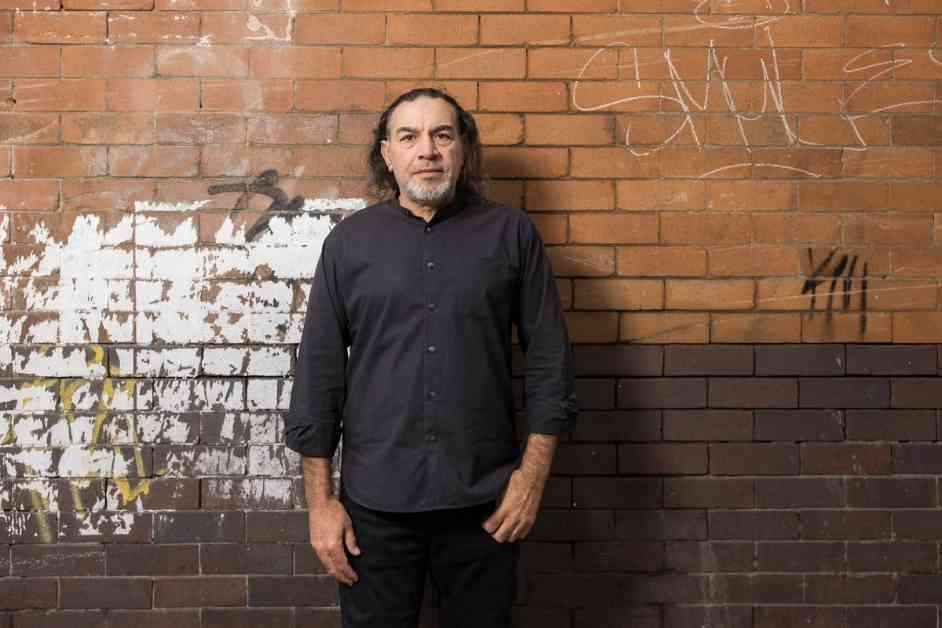Australia Pulls 2026 Venice Biennale Artist Over Hezbollah Video Controversy
In a surprising move, artist Khaled Sabsabi has been removed as Australia’s representative for the 2026 Venice Biennale following concerns raised about one of his past works depicting a Hezbollah leader. The decision was announced by Creative Australia, the pavilion’s organizer, after regular working hours in Australia, sparking a wave of controversy and debate.
The organization stated that the decision to drop Sabsabi and his entire artistic team, including curator Michael Dagostino, was a unanimous one. While Creative Australia emphasized its advocacy for artistic freedom of expression, it expressed concerns about the potential divisive impact that the selection could have on public perception and support for Australia’s artistic community.
Sabsabi’s controversial work in question is a 2007 video installation titled “You,” featuring manipulated footage of Hassan Nasrallah, a prominent figure in the Hezbollah organization. The video, intended to be a response to racism experienced by Sabsabi as a Muslim immigrant in Australia, portrays Nasrallah in a reverent light, with digitally enhanced elements that have been subject to varying interpretations.
Public Backlash and Social Media Outcry
The removal of Sabsabi from the Venice Biennale sparked widespread criticism and debate, particularly in light of his past boycott of the 2022 Sydney Festival following sponsorship from the Israeli embassy. An article in a major Australian publication labeled Sabsabi’s approach to Nasrallah as “questionable and ambiguous,” leading to calls for a reevaluation of Creative Australia’s selection process.
Social media platforms were ablaze with commentary and opinions on the controversy, with some users expressing strong disapproval of Sabsabi’s work and its representation of Australia on an international stage. The decision to withdraw Sabsabi’s pavilion drew both support and condemnation, further fueling the ongoing discourse around art, politics, and cultural representation.
One tweet, garnering over 1,000 likes, criticized the artwork, stating that it does not align with Australian values and is offensive to Jewish Australians. The tweet went on to question the selection of individuals with affiliations to boycotts and controversial figures for such a prestigious international showcase, signaling broader concerns about the integrity of Australia’s artistic representation.
Implications for the 2026 Biennale and Global Artistic Community
The repercussions of Sabsabi’s removal from the 2026 Venice Biennale are likely to ripple across the global art scene, underscoring the complex intersections of art, politics, and social commentary. The decision reflects growing tensions and sensitivities surrounding contentious geopolitical issues, such as the ongoing conflicts in the Middle East and their impact on cultural expression and interpretation.
As the art world grapples with questions of censorship, representation, and artistic freedom, the incident serves as a poignant reminder of the power and responsibility that artists and institutions bear in shaping public discourse and perceptions. The upcoming Biennale promises to be a platform for renewed dialogue and introspection, where the boundaries of creativity and expression will be tested against the backdrop of wider socio-political currents.
The withdrawal of Sabsabi’s pavilion marks a pivotal moment in Australia’s artistic trajectory, prompting reflections on the nation’s cultural identity, values, and aspirations on the global stage. The decision underscores the complex dynamics that underpin artistic selection and curation, highlighting the delicate balance between creative autonomy and societal expectations in fostering a vibrant and inclusive artistic ecosystem.
The controversy surrounding Sabsabi’s removal raises broader questions about the role of art in reflecting, challenging, and shaping societal norms and values. As the 2026 Venice Biennale approaches, the ongoing dialogue sparked by this incident will undoubtedly shape the contours of artistic expression, representation, and engagement in an increasingly interconnected and contested world.
This article has been updated to reflect the latest developments in the controversy surrounding Khaled Sabsabi’s removal from Australia’s 2026 Venice Biennale pavilion. The decision to withdraw Sabsabi and his artistic team has generated significant debate and reflection within the global art community, underscoring the complex intersections of art, politics, and cultural representation in today’s rapidly evolving landscape.












